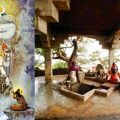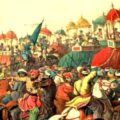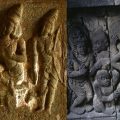Sengol: Rebuilding History with the Sacred Symbol
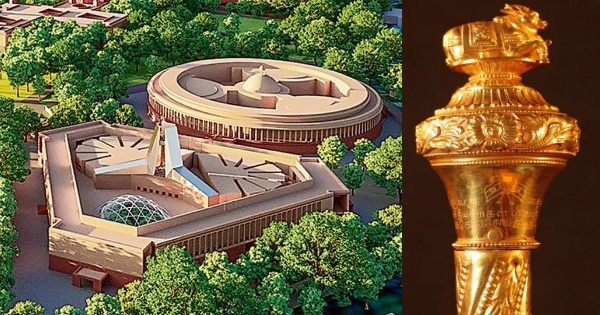
The White man wrote history with the help of his texts. The rest of the world, many of whom he enslaved and whose history he tried to erase, have tried to build it around sacred symbols, sometimes as simple and elegant as a ‘Sengol’.
A sacred symbol like a Sengol is larger than life, larger than anything else existing at that moment in history and makes the moment larger than any one man at that time.
There was perhaps only one thought that was on the mind of a man not so white but white by default on fourteenth of august, nineteen forty seven and who received it from the white man. It was that nothing should steal the glory of his speech that he is going to read out. So he thought it better to relegate the specter to the oblivion of history, in this case as a ‘golden walking stick’ in a personal museum.
Why was the Sengol rejected as a symbol of independent India and kept as a ‘walking stick’ in a private museum. It doesn’t take much of psychoanalysis to decipher that. A sacred symbol like a Sengol communicates a message that is both timeless and universal, a message that tells about a lost people and their crushed civilization, their memory and hopes, their longings for freedom and their sacrifices to achieve it. A sacred symbol like a Sengol makes a society reflect about her past. They evoke emotions that nothing else can evoke. They tell us we are a whole society, not fragmented as made out to be. It tells us how complex was getting our freedom rather than it reduced to a single individual event with the glory thrown upon only one man and how he chose to shape it for future generations.
Would India have been different had the Sengol been given its importance by the people entrusted with its care in nineteen forty seven?
It would have reminded us of the glory that India was, has always been and told her people that they have a legacy that is less than none, one that bound them together despite language and race and color. It would have created a healing space transcending the trauma that overwhelmed us for centuries and divided us. Relegating it to oblivion meant that Indians don’t realize their roots, remain unchanged and don’t retrieve their legacy to create the new identity as a unified people.
In India that is emerging, a national identity is being defined through new readings of their history and that history is anchored in sacred symbols.
To tell the history of new India, a history that does not unduly privilege only a few people, it needs to go beyond texts and find new meanings and identity in objects which need to be debated and contested.
Wherever history has been created through sacred symbols, it has given voice to the voiceless. The Sengol will restore that role. It is to speak for the thousands and millions who gave their lives and who wanted to come out of the enslavement through fighting the British. The Sengol will restore that voice in the hall of the New Parliament.
In the Sengol perhaps, we will see the image of a new kind of ruler, not an ‘I’ but a ‘we’, not an individual but a representative of whole class. Seven decades of personality cult may end with a crushing blow soon.
But the most important change about the Sengol is that in one sacred symbol alone we see the old regime going and the new regime emerging, and the change from one to the other. There are very few symbols like this in history where a historic transition is present before us. It is that the people of India did what no one had ever done and will create a new world and push it forward. That is the ideology of Sengol and the New Parliament where it is going to reside. The Sengol was to be installed in the parliament at a time when the Indian people had thrown off the biggest empire in the world and sent them packing home. They had overtaken massive famines, two world wars. It was a time when the world said ‘This is a country that has been enslaved for centuries, how can it come on its own?’
The Sengol will give rise to poetic imagination and recreation of our history through symbols, something that has been missing from the Indian perspective. It will take away the writing of history through texts and speeches by a select few and making us believe what never happened.
It will make us see the continuity of our civilization, delve deep into imagination, into our past and legacy and create a future unshackled by colonial legacy. It will remind our future generations that the transfer of power was not a single individual event as portrayed but a complex event drenched in blood of millions.
One can say that an injustice done by one prime minister and foisted upon the country has been undone something that only another prime minister could do, not anyone else.
I also feel glad to say it happened in my lifetime. I know I am not alone when I say this.
Featured image courtesy: Google.
Facebook Comments Box
The following two tabs change content below.
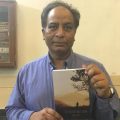
Dr. Rajat Mitra
Dr. Rajat Mitra is a Clinical Psychologist, Author, Harvard alumni, and UN public service awardee for gender justice, having worked nationally and internationally on human rights issues.

